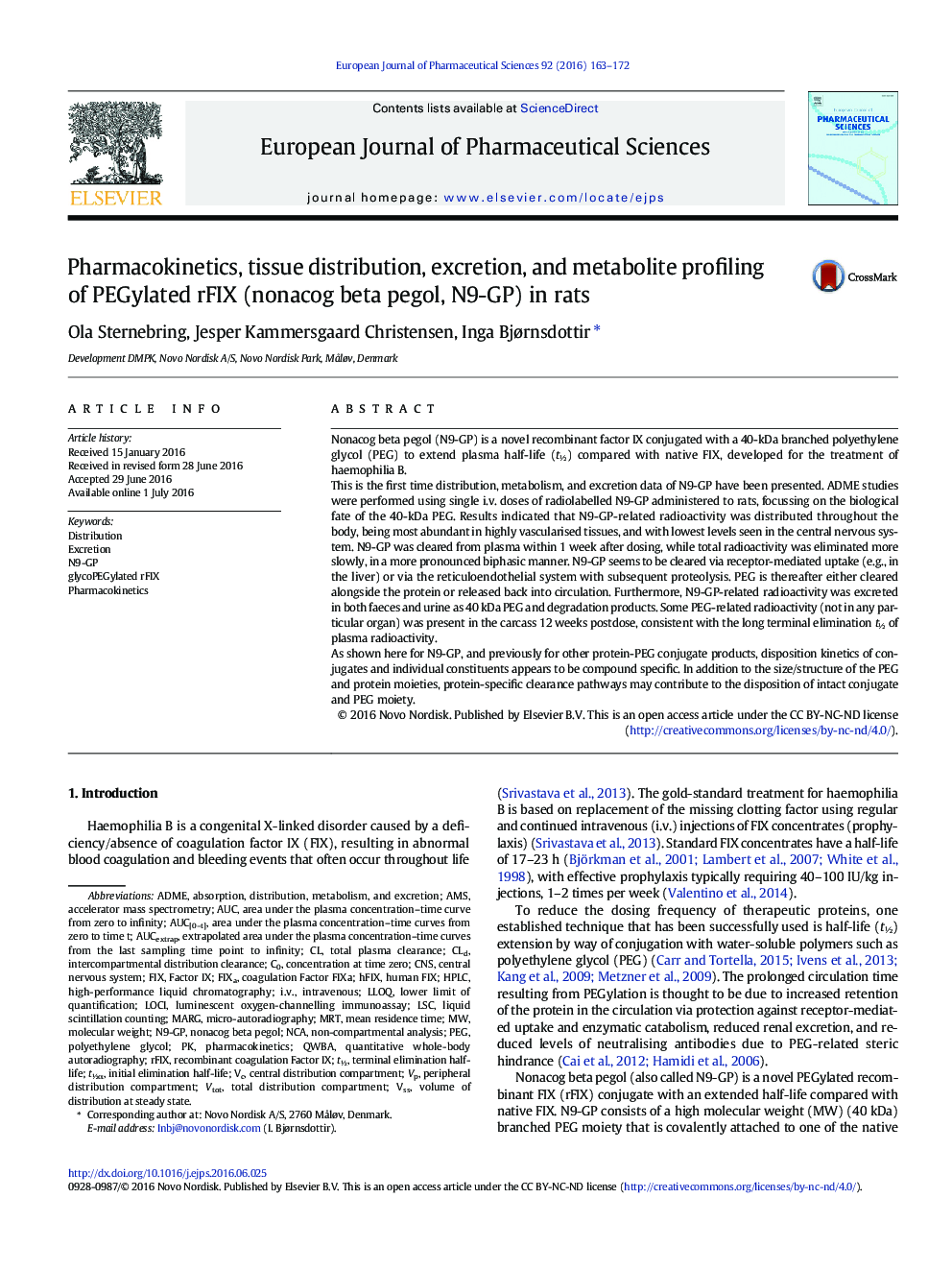| Article ID | Journal | Published Year | Pages | File Type |
|---|---|---|---|---|
| 5809595 | European Journal of Pharmaceutical Sciences | 2016 | 10 Pages |
Nonacog beta pegol (N9-GP) is a novel recombinant factor IX conjugated with a 40-kDa branched polyethylene glycol (PEG) to extend plasma half-life (t½) compared with native FIX, developed for the treatment of haemophilia B.This is the first time distribution, metabolism, and excretion data of N9-GP have been presented. ADME studies were performed using single i.v. doses of radiolabelled N9-GP administered to rats, focussing on the biological fate of the 40-kDa PEG. Results indicated that N9-GP-related radioactivity was distributed throughout the body, being most abundant in highly vascularised tissues, and with lowest levels seen in the central nervous system. N9-GP was cleared from plasma within 1 week after dosing, while total radioactivity was eliminated more slowly, in a more pronounced biphasic manner. N9-GP seems to be cleared via receptor-mediated uptake (e.g., in the liver) or via the reticuloendothelial system with subsequent proteolysis. PEG is thereafter either cleared alongside the protein or released back into circulation. Furthermore, N9-GP-related radioactivity was excreted in both faeces and urine as 40 kDa PEG and degradation products. Some PEG-related radioactivity (not in any particular organ) was present in the carcass 12 weeks postdose, consistent with the long terminal elimination t½ of plasma radioactivity.As shown here for N9-GP, and previously for other protein-PEG conjugate products, disposition kinetics of conjugates and individual constituents appears to be compound specific. In addition to the size/structure of the PEG and protein moieties, protein-specific clearance pathways may contribute to the disposition of intact conjugate and PEG moiety.
Graphical abstractDownload high-res image (130KB)Download full-size image
